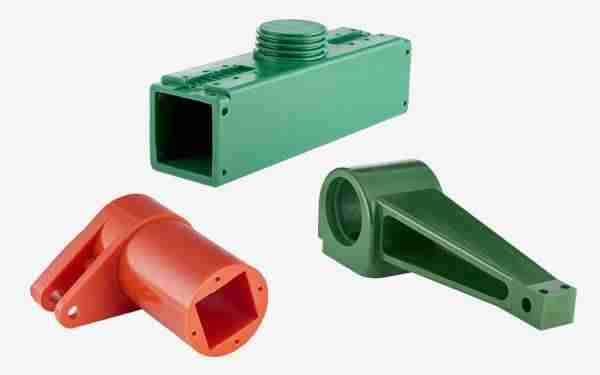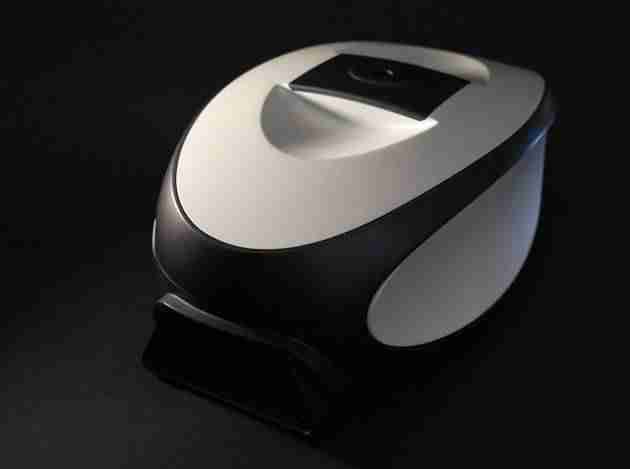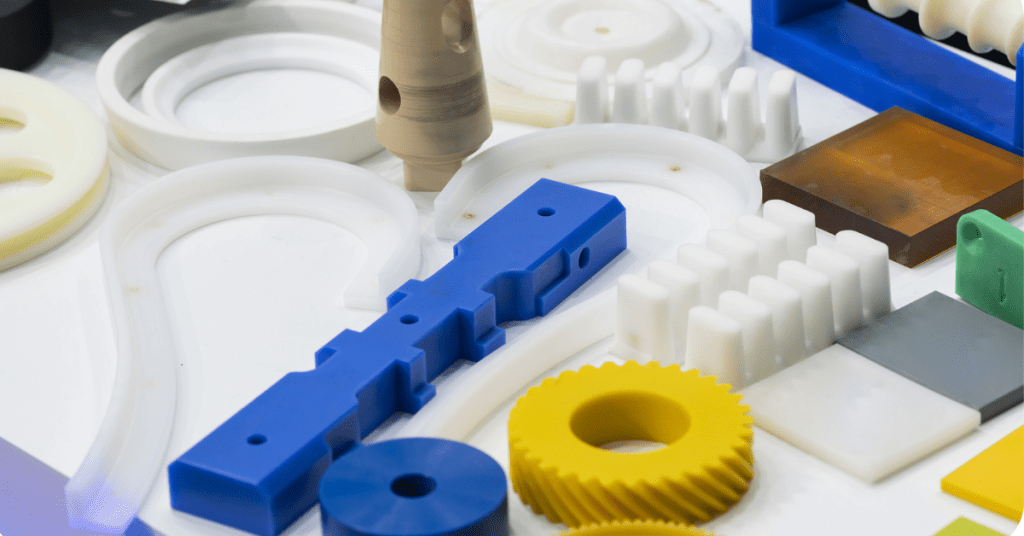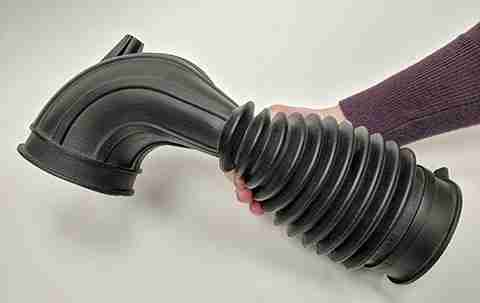Urethane Casting
In Urethane Casting (also called urethane molding, RTV molding, or RTV mold making), a liquid material is poured into a mold containing a hollow cavity in the shape of the part, then allowed to solidify. The technique allows for the creation of small quantities of production-ready parts without the added expense of machine tooling.
Low Volume, Durable Parts with Production-Level Quality
- Instant quotes & DFM feedback
- Production grade quality
- Parts as fast as 10 days
When companies choose to make their parts using urethane casting services from Elimold, they can expect quick turnaround times, low-upfront costs, and material flexibility. Our polyurethane materials are durable, robust, and available in various colors, durometers, and textures.

What Makes Us Different?
As a urethane molding company, we know custom urethane or polyurethane casting is the ideal process to produce near-production quality parts for prototypes and other low-volume needs. Our urethane casting services utilize 3D printing and silicone rubber molds, keeping tooling costs low and turnaround times fast. The unique properties of many production-grade materials can be closely duplicated through different urethane formulations. Especially when compared to plastic injection molding, urethane casting delivers numerous advantages.
Low tooling costs
- Silicone rubber molds are created around a 3D printed model — one of RevPart’s core capabilities.
- No need for costly steel or other metal molds.
- Silicone rubber molds are created around a 3D printed
Fast turnaround times
- RevPart’s in-house capabilities mean that we control all lead times.
- Our 48-hour quoting process means no delays at any step of the way.
- 3D printed models and silicone molds can be produced in days, not weeks.
Closely reproduce the properties of other materials
- The properties of urethane allow different formulations for different properties, reducing material costs.
- Test the design and aesthetics of parts before full production runs.
- Easy color reproduction through a wide variety of paints.
Little to no finishing required
- Original 3D printed models are finished to the required specs, meaning that parts typically will not need to be finished after being molded.
- Molds are designed to minimize flash and part lines.
- Less finishing means faster delivery times.
Get a Urethane Casting Quote
If you’re ready to start a cast urethane or silicone project, get a free quote in 24 hours or less by filling out our quick quote form.Interested in our other services? Elimold is your go-to source when it comes to 3D Printing for Prototyping and more.Our engineers will review your project and get back to you with a cost estimate and project analysis. Want to learn more? send email now!
Urethane Casting Tolerances
Typically Cast Urethane Part Tolerances
| Description | Tolerance Notes |
|---|---|
|
Distance Dimensions |
+/- 0.010” or +/- 0.003” per inch, whichever is larger, is typical. Irregular or overly-thick geometries may cause deviances or deflection due to shrinkage. |
|
Shrink Mitigation |
A shrinkage rate of +0.15% can be expected due to thermal expansion of the liquid, and the response of the flexible mold. |
|
Surface Quality |
Surface finish is externally smoothed to a satin or matte surface. Grow lines may be present on internal or difficult-to-access features. Polishing or custom finishes must be clearly defined and agreed upon at the point of order. |
|
Feature Definition |
Sharp corners and text may appear slightly rounded. |
|
Size Recommendation |
We can offer urethane cast parts as large as 30” (0.762 m) long. |
This table is based on the assumption that designs have an adequate draft, radii, and coring for manufacturability. Please see Elimold’s Manufacturing Standards for more information on tolerances per process.


Urethane Casting Materials
Advanced Formula Polymers (AFPs) will exceed your expectations for urethane casting and short-run production. Utilized for clinical trials, product testing, alpha/beta builds, prototype and end-use parts, AFP offers an unmatched selection of materials to meet your applications. Materials exhibiting properties including UL94V-0 flame rating, MRI transparency and even impact resistant composite reinforced plastics are available.
Shore D Urethane (Rigid)
| MATERIAL | DESCRIPTION | BENEFITS | APPLICATIONS |
|---|---|---|---|
| AFP3100 | Our high Izod impact urethane for pre-production and production applications; Certified to USP Class VI requirements and RoHS 2 / REACH SVHC Compliant |
|
|
| AFP3100FR | Our most widely used urethane for production applications with a UL 94 V-0 flammability listing at .1” thickness. RoHS 2 / REACH SVHC Compliant |
|
|
| AFP3105FR | Used for fire retardant applications in thinner sections. Meets the requirements of FAR 28.853 Part 1, (a) (1) (i) for flammability in 0.043 inch (1.1 mm) thickness; RoHS 2 / REACH SVHC |
|
Durable, high-impact strength urethane with FAR 25.853 flammability rating |
| AFP3200 | Provides a unique combination of physical properties for very tough and durable parts and assemblies. Good rigidity and stiffness due to its very high modulus. High tensile and impact strength for excellent resistance to breakage. |
|
|
| AFP3320 | Used for very high temp applications; Heat deflection of 346F at 264 psi test; RoHS 2 / REACH SVHC Compliant |
|
|
| AFP3400 | Used for applications that require flexibility having a low Flexural Mod. of 116,061 psi and high Izod Impact strength of 4.40ft.lbs/inch. Simulates Polypropylene. | Very good impact resistance | Prototype parts having mechanical properties close to polypropylene, with features requiring superior elongation like living hinges |
| AFP3600 | Used for applications that require a clear material; can also be tinted easily; has good heat resistance and best for smaller geometries. |
|
|
| PT8958 | Used primarily in production applications of medium to large parts that require MRI transparency and a UL 94V0 registered flame rating. |
|
|
| RC 79D | Used primarily in production applications of smaller parts that require MRI transparency and a UL 94V0 registered flame rating. |
|
|
| U0080DC-L | Used for applications that require a clear material; can also be tinted easily; has good heat resistance and best for larger geometries. |
|
|
| CompositeCast with AFP3100FR | A glass composite sheet filled version of our most widely used urethane for production applications with a UL 94 V-0 flammability listing at .1” thickness. RoHS 2 / REACH SVHC Compliant. Parts exhibit enhanced flexural and impact properties. |
|
|
| CompositeCast with PT8958 | A glass composite sheet filled version of our MRI transparent production urethane used for medium to large parts that require MRI transparency and a UL 94V0 registered flame rating. Parts exhibit enhanced flexural and impact properties. |
|
|
Shore A Urethane (Elastomeric)
| MATERIAL | DESCRIPTION | BENEFITS | APPLICATIONS |
|---|---|---|---|
| E1005AL | Extra Soft, 5 Shore A Elastomer used for production parts, special effects props and medical training models; RoHs/REACH Compliant |
|
|
| E1015AL | Soft, 15 Shore A Elastomer used for production parts, special effects props and medical training models; RoHs/REACH Compliant |
|
|
| E1025AL | Soft, 25 Shore A Elastomer used for production parts, special effects props and medical training models; RoHs/REACH Compliant |
|
|
| E1030AL | Soft, 30 Shore A Elastomer used for production parts, over molding, special effects props and medical training models; RoHs/REACH Compliant |
|
|
| E1040AL | Medium Soft, similar to a pencil eraser 40 Shore A Elastomer used for production parts, over molding, special effects props and medical training models; RoHs Compliant |
|
|
| E1050AL | Medium Soft, similar to a Door Seal 50 Shore A Elastomer used for production parts, over molding, special effects props and medical training models; RoHs Compliant |
|
|
| E1060AL | Medium Hard, 60 Shore A Elastomer used for production parts, over molding, special effects props and medical training models; RoHs Compliant |
|
|
| E1070AB | Medium Hard, similar to automotive tire tread 70 Shore A Elastomer used for production parts and special effects props; RoHs Compliant |
|
|
| E1080AB | Hard, similar to Hydraulic O-Rings 80 Shore A Elastomer used for production parts and special effects props; RoHs Compliant |
|
|
| E1090AB | Hard, similar to a squeegee 90 Shore A Elastomer used for production parts and special effects props; RoHs Compliant |
|
|
| E1095AB | Hard, similar to a shopping cart wheel 95 Shore A Elastomer used for production parts, strain reliefs and special effects props; RoHs Compliant |
|
|
Expanding Foam
| MATERIAL | DESCRIPTION | BENEFITS | APPLICATIONS |
|---|---|---|---|
| Foam-Flex V412 | Flexible, Soft, variable density foam ranging from 4-12 lbs. used in special FX, medical training and prototype seat and cushion applications. |
|
|
| Foam-Flex V915 | Flexible, Lively, variable density foam ranging from 9-15 lbs. used in special FX, medical training and prototype seat and cushion applications. |
|
|
| Foam-Flex V1232 | Flexible, Tough, variable density foam ranging from 12-32 lbs. used in special FX, medical training and prototype seat and cushion applications. |
|
|
| Foam-Rigid V316 | Rigid, variable density foam ranging from 3-16 lbs. used in special FX, flotation, device/equipment insulation and prototype part applications. |
|
|
Silicone (CompressionCast Materials)
| MATERIAL | DESCRIPTION | BENEFITS | APPLICATIONS |
|---|---|---|---|
| AFS15 | Soft, 15 Shore A silicone rubber used for preproduction and production parts like keypads, seals and gaskets. | Platinum based silicone |
|
| AFS30 | Soft, 30 Shore A silicone rubber used for preproduction and production parts like keypads, seals and gaskets. | Platinum based silicone |
|
| AFS40 | Medium Soft, 40 Shore A silicone rubber used for preproduction and production parts like keypads, seals and gaskets. | Platinum based silicone |
|
| AFS50 | Medium Soft, 50 Shore A silicone rubber used for preproduction and production parts like keypads, seals and gaskets. | Platinum based silicone |
|
| AFS60 | Medium hard, 60 Shore A silicone rubber used for preproduction and production parts like keypads, seals and gaskets. | Platinum based silicone |
|
Finishing processes with master craftsmanship and experience
Our skilled finishers and model makers complete all finishing, painting, and texturing services in-house. Secondary process treatments, including silkscreen and graphics applications, enable us to provide realistic prototypes tailored to your requirements. The prototype will look, feel, and function as a final product. Elimold’s rigorous quality standards are upheld, and delivery schedules are maintained.
We have a wide range of additional finishing options we provide, depending on what is needed for the project:
| Matte/Frosted | Parts have a smooth, satin-like finish due to the master pattern being bead-blasted matte. Transparent and translucent parts with this finish will appear frosted. Matte finishes are helpful for handheld and high-touch areas as it reduces fingerprint visibility. |
| Semi-Gloss | Semi-gloss finishes include some sheen but not high reflectivity. Semi-gloss finishes are between high-gloss and matte, resulting in a smooth, easy-to-clean surface. |
| High-Gloss | A highly reflective glossy finish requires polishing the master pattern before making the mold. The high gloss has a high sheen and will have the highest transparency for transparent parts. High gloss is helpful for cosmetic models, cleanable surfaces, and lenses. |
| Textured | Texture is applied via paint and manual techniques to the master pattern before making soft tooling. Texturing is useful for high-use surfaces, like handles, where the small raises and reliefs improve the grip and reduce fingerprint or scuff marks. |
| Custom | Elimold can provide additional processing, including secondary finishes, painting, and more. |
Urerhane casting process
A master pattern is created through 3D printing or CNC machining from the provided 3D CAD data. The master is then finished, lightly painted with primer, and attached to a parting line board. Any required cores or side actions are added, and one side of the master is covered with a mold box. This box is filled with an RTV silicone rubber. After curing, the parting line board is removed, and the other half of the mold box is attached, then the process is repeated. When complete, the master pattern is removed from the mold and stored as an engineering model or to create additional molds as needed. Molds are typically good for 20-25 parts depending on the size, part geometry and material.
Now the mold is ready for the urethane molding process. A conventional polyurethane resin is injected at low pressure into the RTV mold and cured for 2 to 12 hours in pressurized tanks maintained at 65 PSI for proper material density.
Elimold’s precision meter mixing system allows for rapid part production using a UL94-VO rated, 80D polyurethane colored either black or white. Each material exhibits a heat deflection of 200º F. If another material is required, a manual mix and gravity pour process is used as an alternative. Typical urethane material properties are similar to thermoplastics at about 80-90% of the strength by comparison.
After completely curing and setting in the mold, the finished piece is removed. All parts will require some finishing work to remove excess flash and standard part cleanup. Most parts will then be finished and painted to match aesthetic requirements. This is especially recommended for any elements with customer-facing surfaces. If there are fine features and/or tight tolerance dimensions, those can be machined in post-processing.
Advantages of Urethane Casting
Before choosing urethane casting for your project, it is important to note the advantages.
Advantages of urethane casting include //
- Different Colors, Textures & Finishes May Be Used
- Wide Variety of Materials, Both Rigid & Flexible Options
- Finer Details Can Be Accomplished
- Varying Wall Thickness
- Reduced Lead Times, Faster Market
- Higher Level of Detail Than Traditional Manufacturing Methods
- Higher Quality Production Parts at Lower Volumes
- Accurate Testing to Ensure Part Accuracy Before Production
- Casted Part Can Include Threaded Inserts, Adding Strength To The Part
- 3D Printed Master Patterns & Silicone Mold Tooling

Common Applications of Urethane Casting
Many industries use urethane casting for their prototype and production projects. Urethane casting can be a smart choice for a lower-quantity project, as investing in injection mold tooling can be expensive. Another advantage of urethane casting is that it is optimal for use as a first production run, serving as a cost-saving measure to test prototypes before larger-scale production. Advanced prototyping is also feasible with urethane casting because the tooling and design changes cost less than other manufacturing methods. It is also possible to test various materials from a single mold. Parts made using urethane casting can also be used for customer testing, given the high aesthetic quality.
Urethane Casting Applications:
- Test Prototypes Rapid
- Prototypes Exhibit Parts
- Consumer Testing
- Products for Crowdfunding
- Lower-Volume Manufacturing
- Concept Models
- Sales Samples
- Engineering Models
- Marketing Test Samples
- Pre-Production Runs
- Bridge to Production Parts
- Point of Purchase Displays
- Conveyor Systems
- Medical Devices
- Specialty Over-Molding
- Aircraft Interior Components
Urethane Casting Design & Build Guidelines
Cast urethane molding is a very flexible process that can easily mold undercuts, thick sections, varying walls and parts without draft. Parts may differ depending on material, finish and geometry, but here are standard guidelines to work from:
- Minimum Wall Thickness & Features = 0.040” (1.016mm) minimum walls and 0.025” (0.635mm) minimum features. (dependent on part geometry and material)
- Standard Finish = Parts can be customized to meet your requirements for as molded or painted. (see more available custom finishes)
- Standard Lead Time = 2-3 weeks for first parts, completion depends on part, mold and material chosen. (*Parts can be delivered in as little as 1 week*)
- Tolerances = +/- 0.005” for first inch then +/- 0.003” per inch thereafter
- Parts per Mold = 25 parts per mold cavity (depending on design and material)
Urethane Casting Services- Get The Best Urethane Cast Parts
Producing rigid rubber and plastic parts of high quality is a need for several industries. If you are also looking for these production solutions, we help you with urethane casting.
As a leading urethane casting company, we use silicone molds and 3-dimensional printed patterns to provide quality parts. As a result, there is no need to rely on a time-consuming tooling process. Our urethane cast parts have various finished dimensions according to the part geometry, casting material, and master model. The shrinkage is around + 0.15%.
Cast urethane is the right option if you are concerned about toughness, color, and surface quality. Although over molding and insert molding are alternatives, we prefer urethane molding for low-volume production.
You can also use polyurethane casting for bridge tooling between injection molding and rapid prototype. Again, we maintain a proper balance of time, cost, and quality. Our urethane cast parts are always color-matched, clear, and painted. Moreover, we provide you with custom-finished solutions.